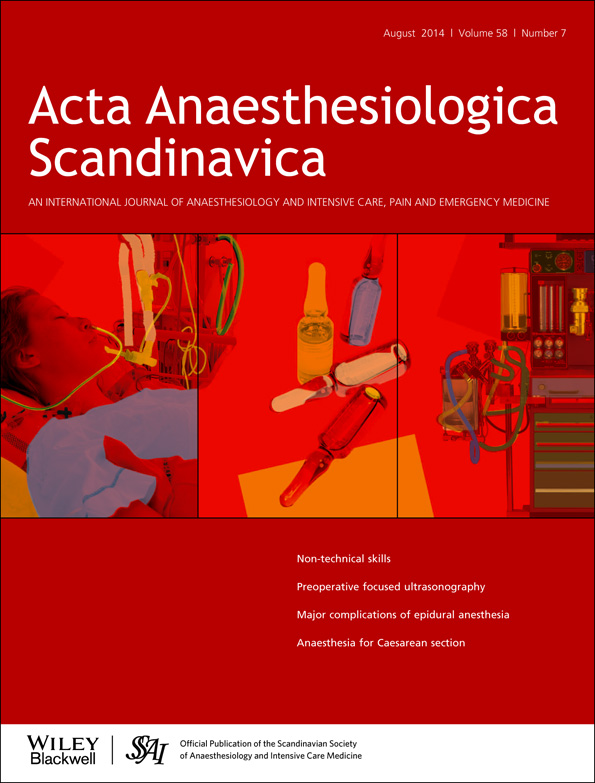The median effective dose of dexmedetomidine for laryngeal mask airway insertion with propofol 2.0 mg/kg
Abstract
Background
Dexmedetomidine can be used as a co-induction agent to facilitate laryngeal mask airway (LMA) insertion with minimal effect on respiratory function. The purpose of the study was to determine the median effective dose (ED50) of dexmedetomidine to facilitate LMA insertion during anaesthesia induction with propofol 2.0 mg/kg without neuromuscular blockade.
Methods
Twenty-two patients, whose American Society of Anesthesiologists physical status was I or II with ages between 18 and 60 years undergoing minor orthopaedic or gynaecological surgery, were enrolled. After an injection of pre-determined bolus dose of dexmedetomidine over 2 min, anaesthesia was induced with propofol 2.0 mg/kg. The modified Dixon's up-and-down method was used to determine the bolus dose of dexmedetomidine, starting from 0.5 μg/kg (step size; 0.1 μg/kg). LMA insertion was conducted 90 s after the propofol injection, and the response of patients was categorized as either ‘success’ or ‘failure.’
Results
Insertion of the LMA was unsuccessful in 12 of 22 patients. The ED50 (95% confidence interval) of dexmedetomidine for successful LMA insertion with propofol 2.0 mg/kg was 0.55 (0.44–0.66) μg/kg. Bradycardia occurred in four patients, and seven patients had an apneic episode.
Conclusion
The single dose of dexmedetomidine for successful LMA insertion to be feasible in 50% of patients was 0.55 μg/kg during anaesthesia induction with propofol 2 mg/kg.




